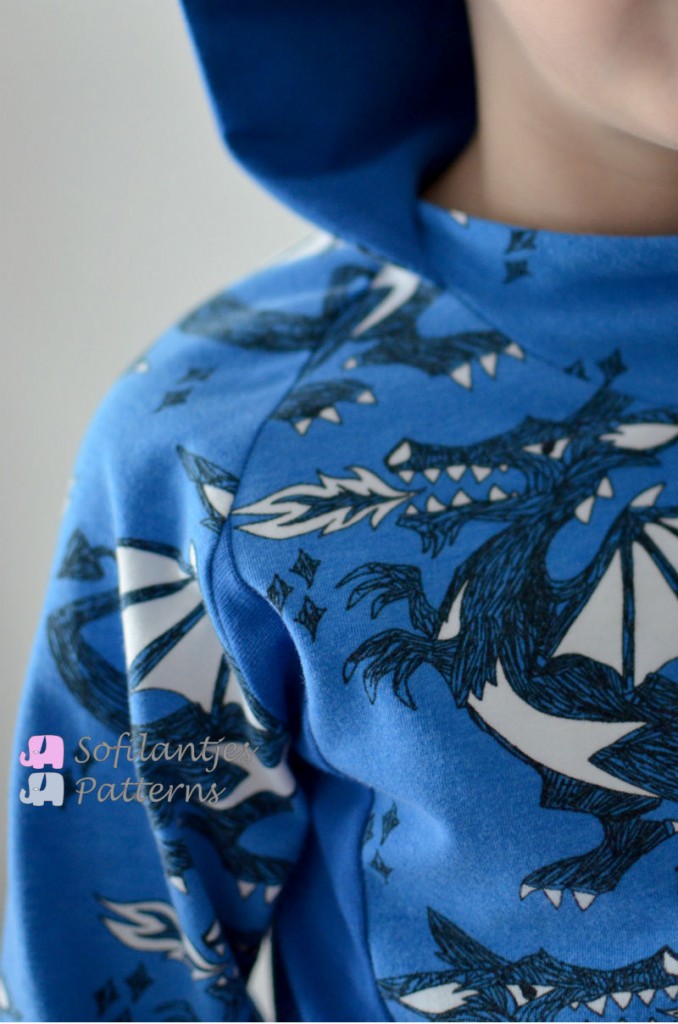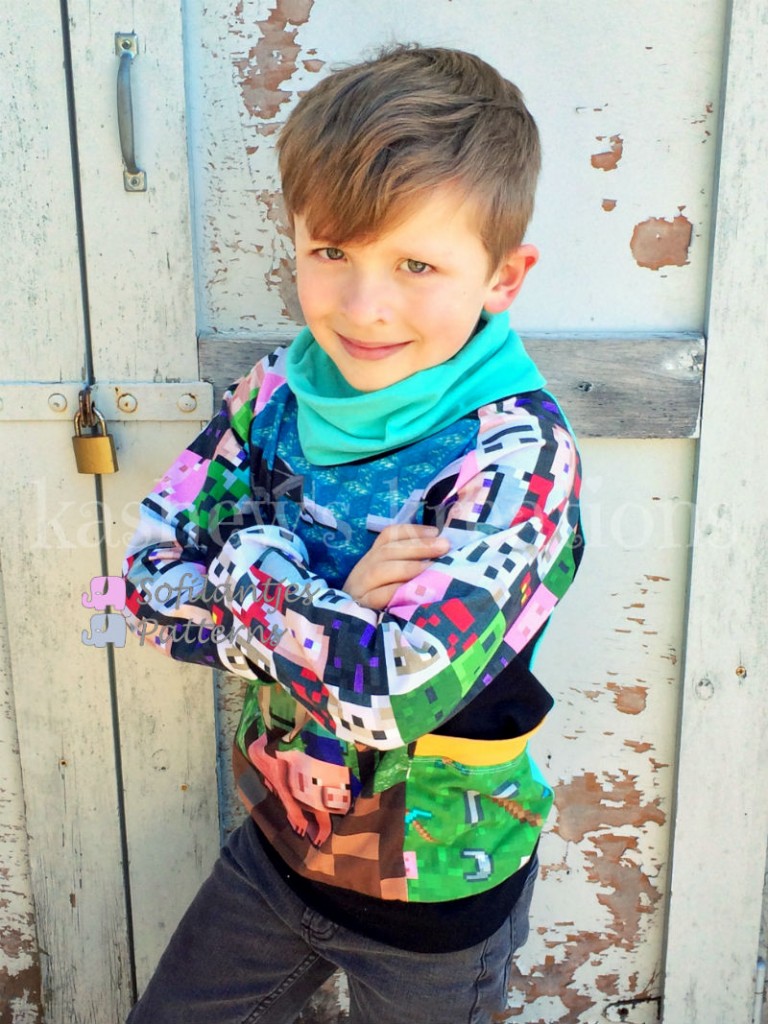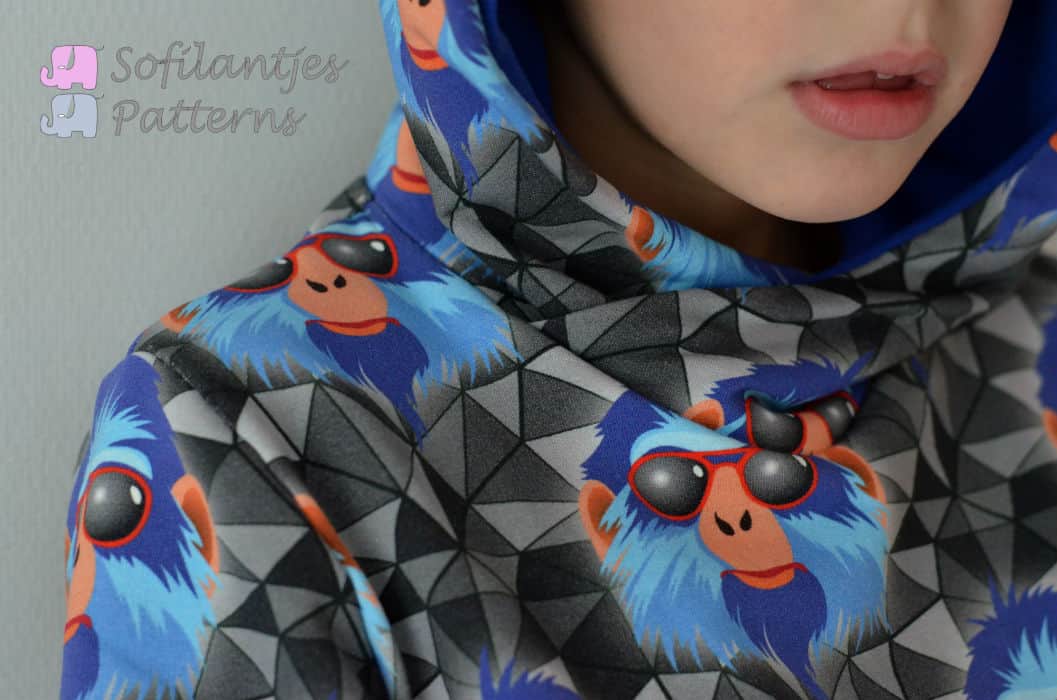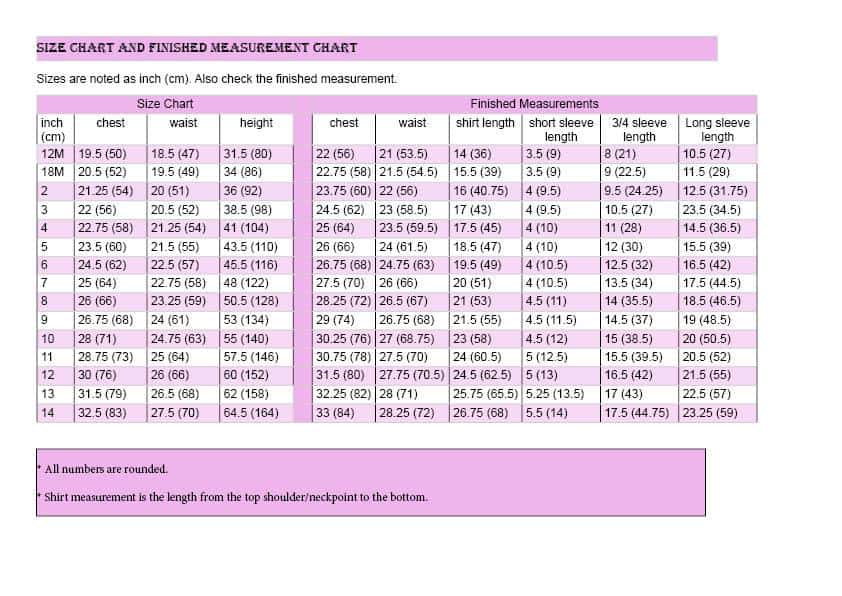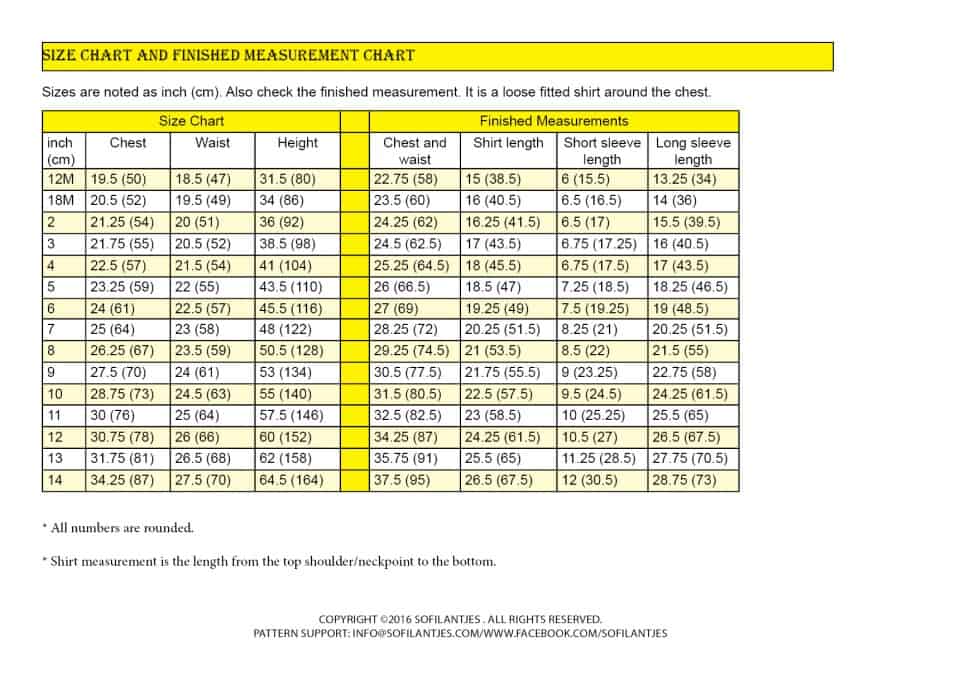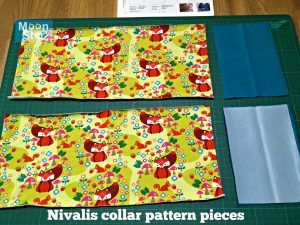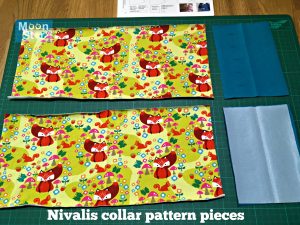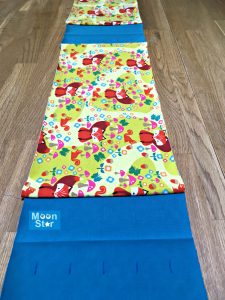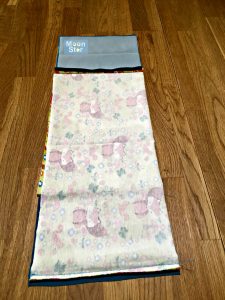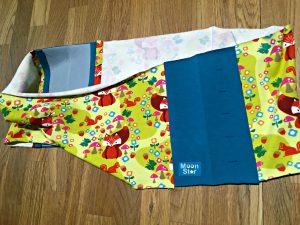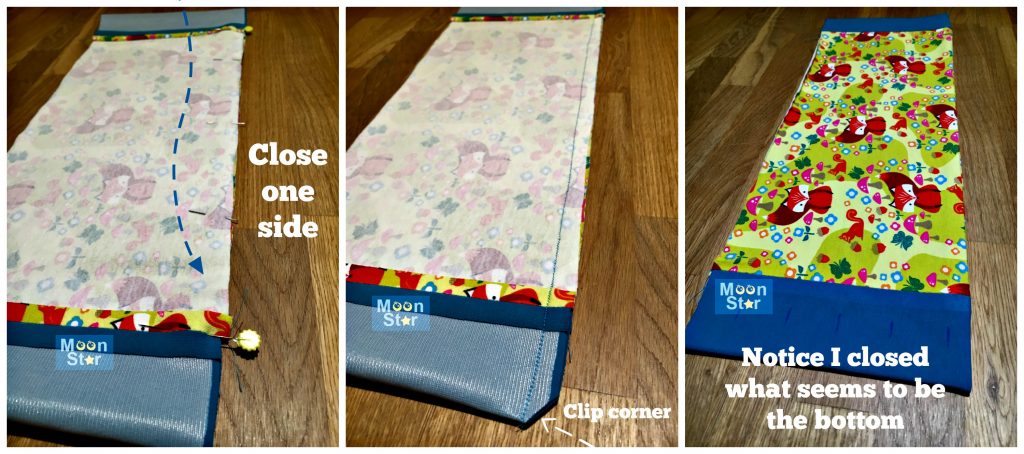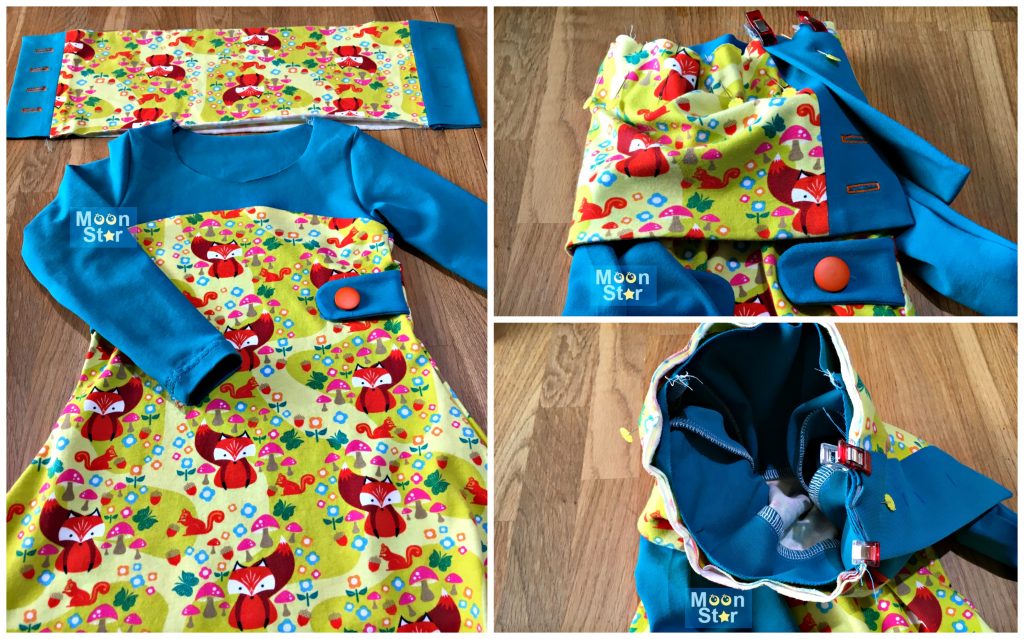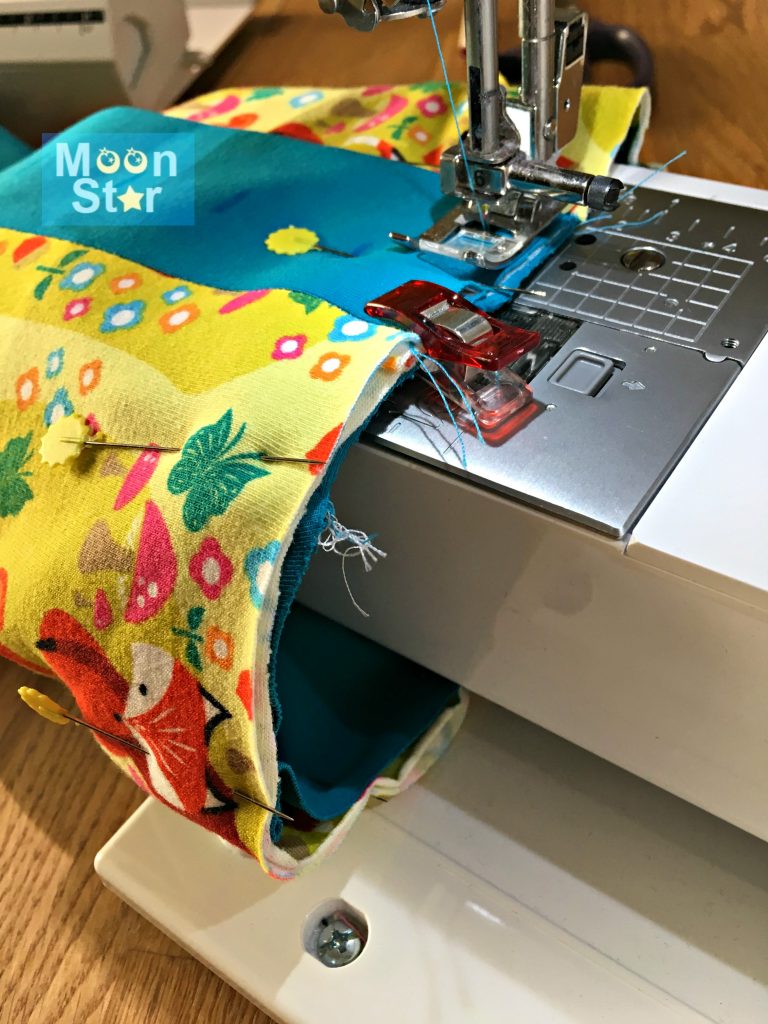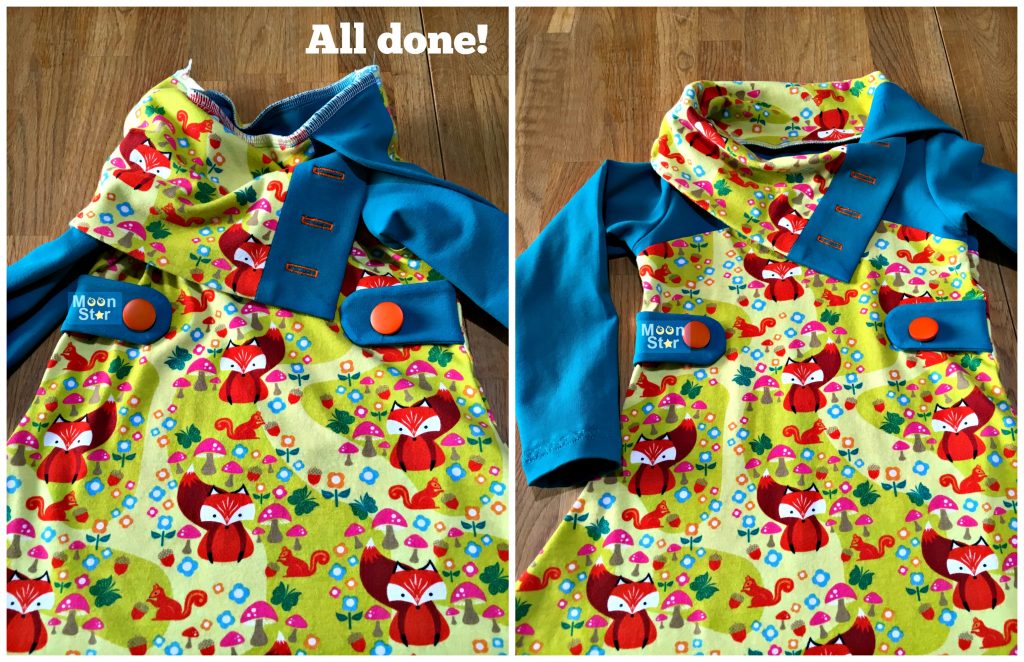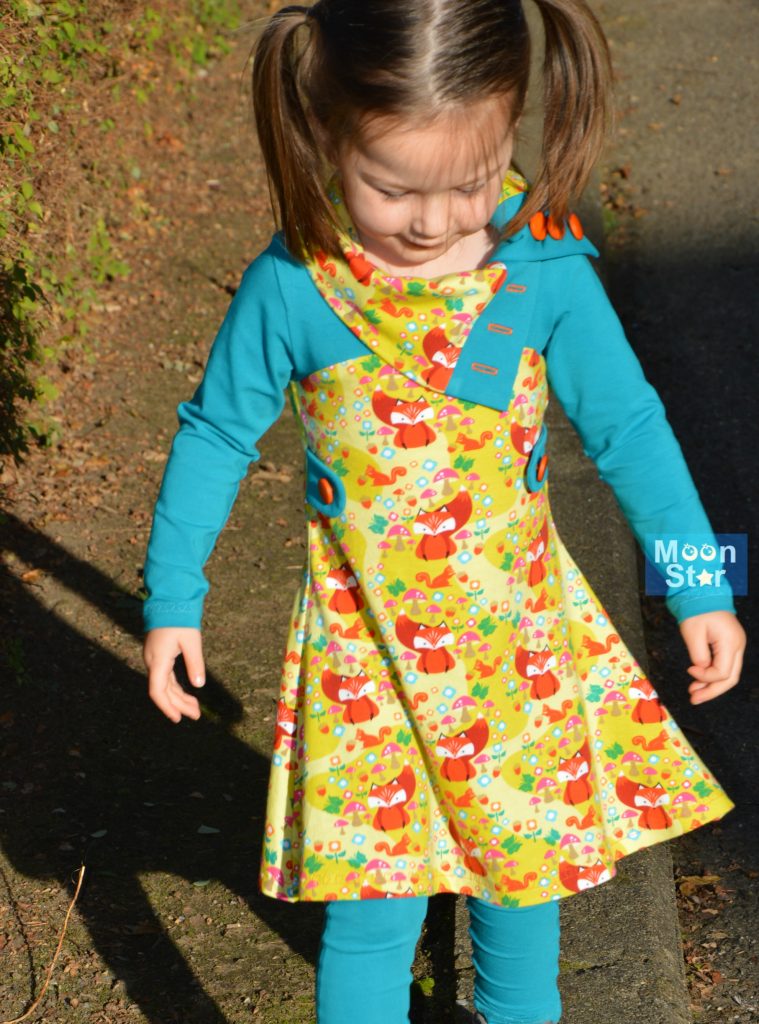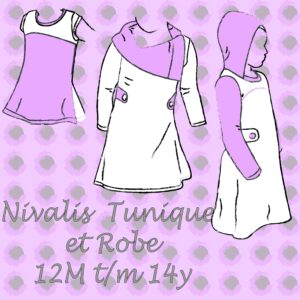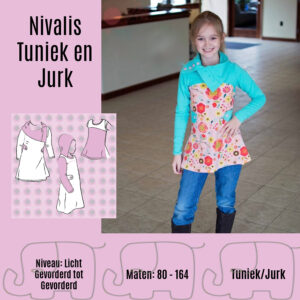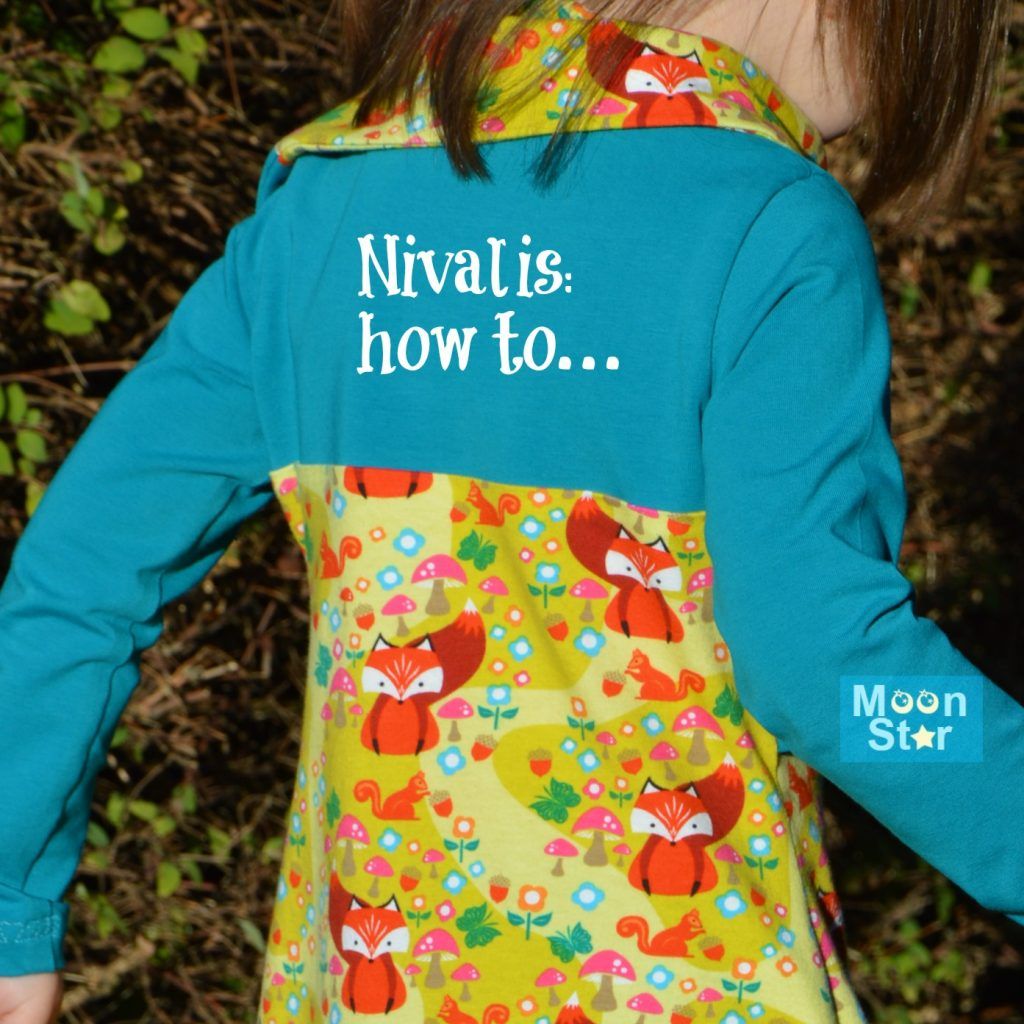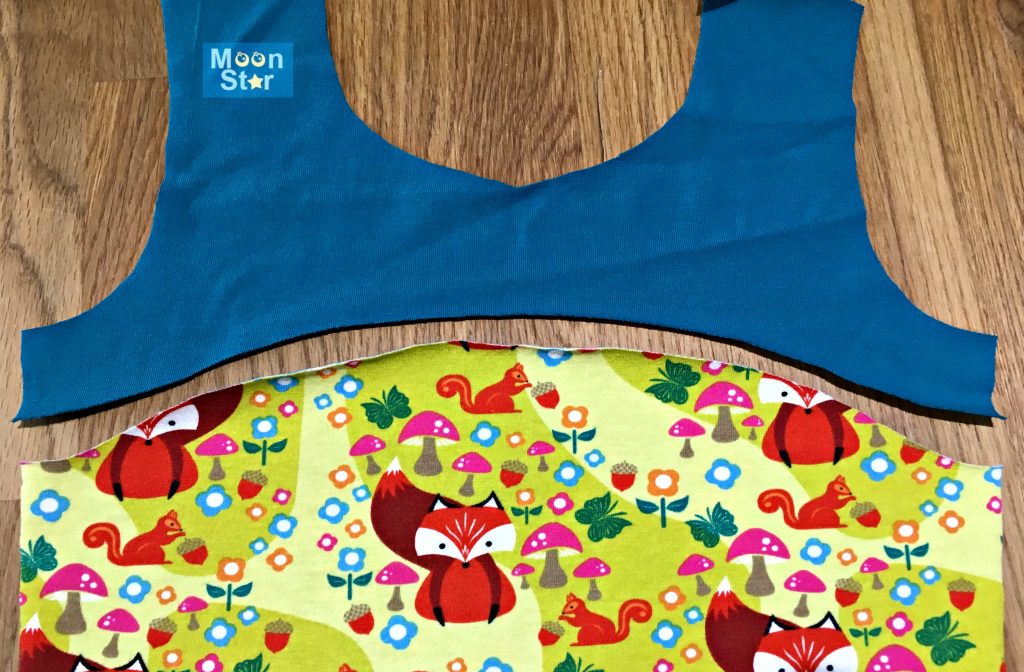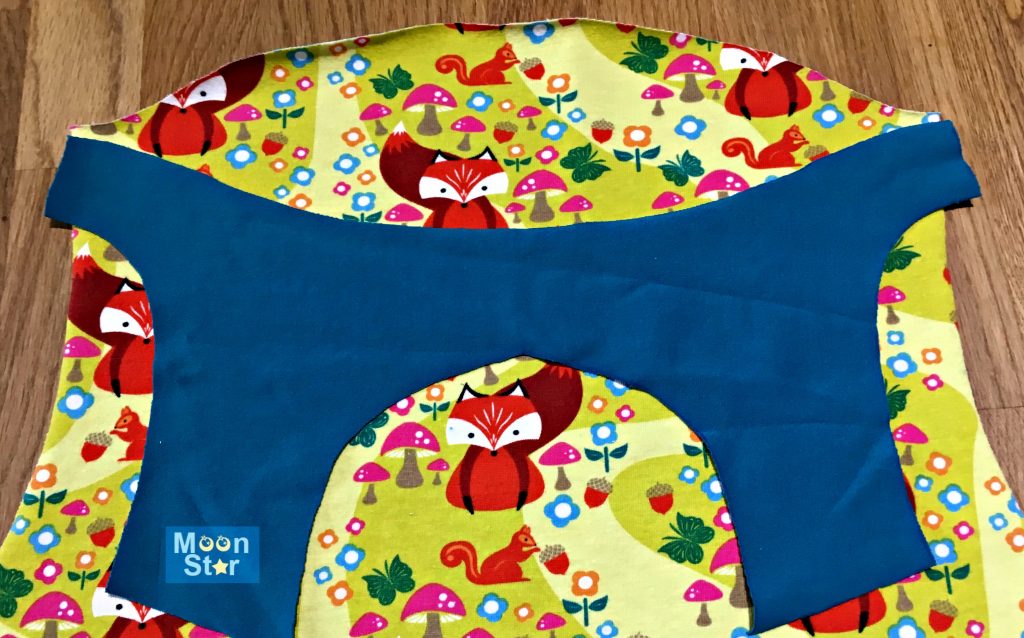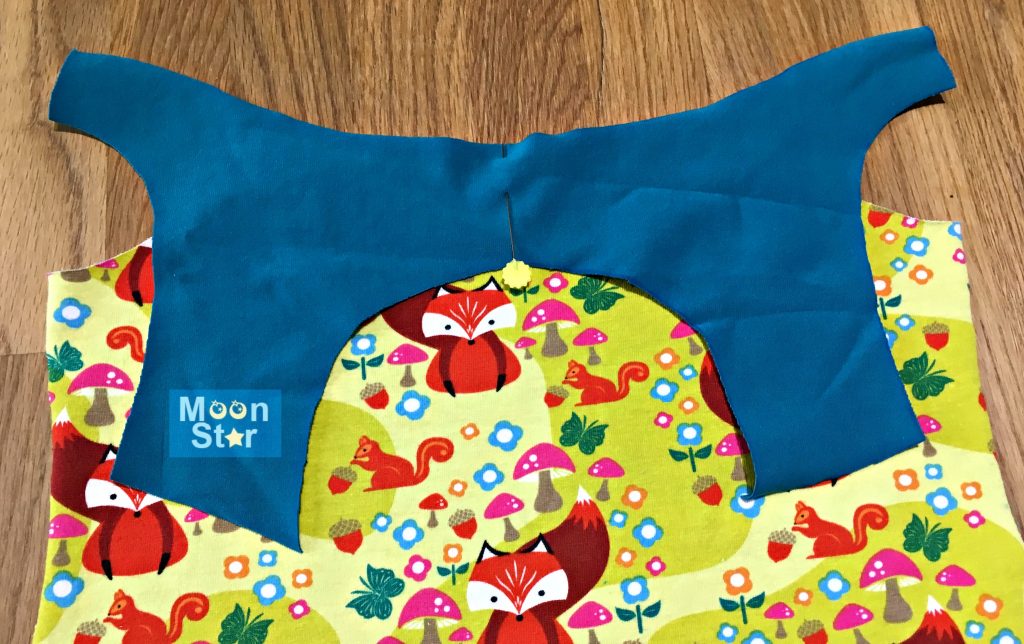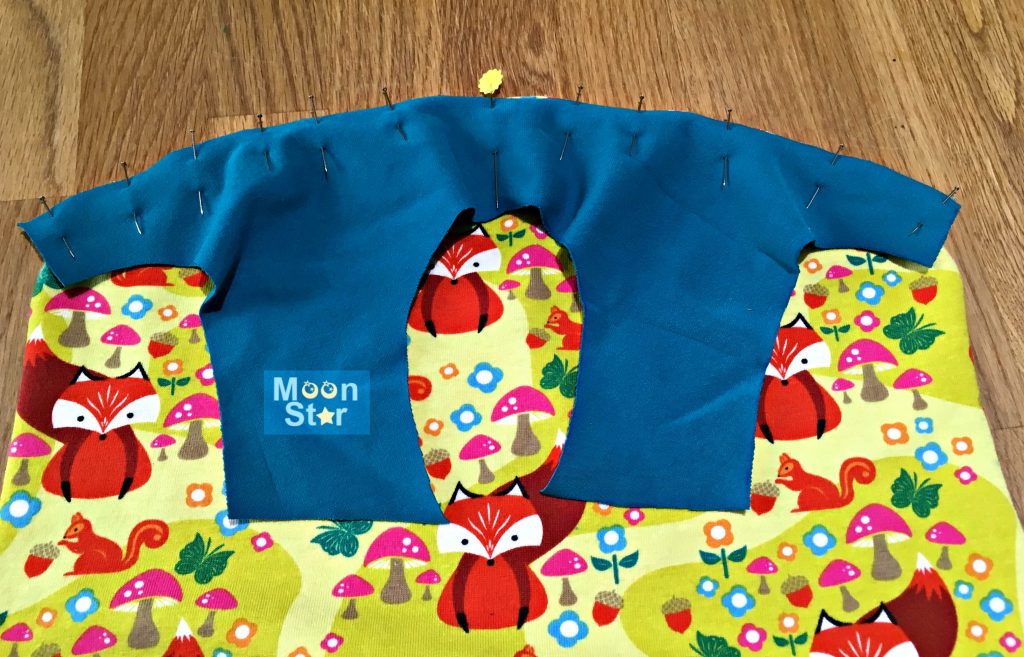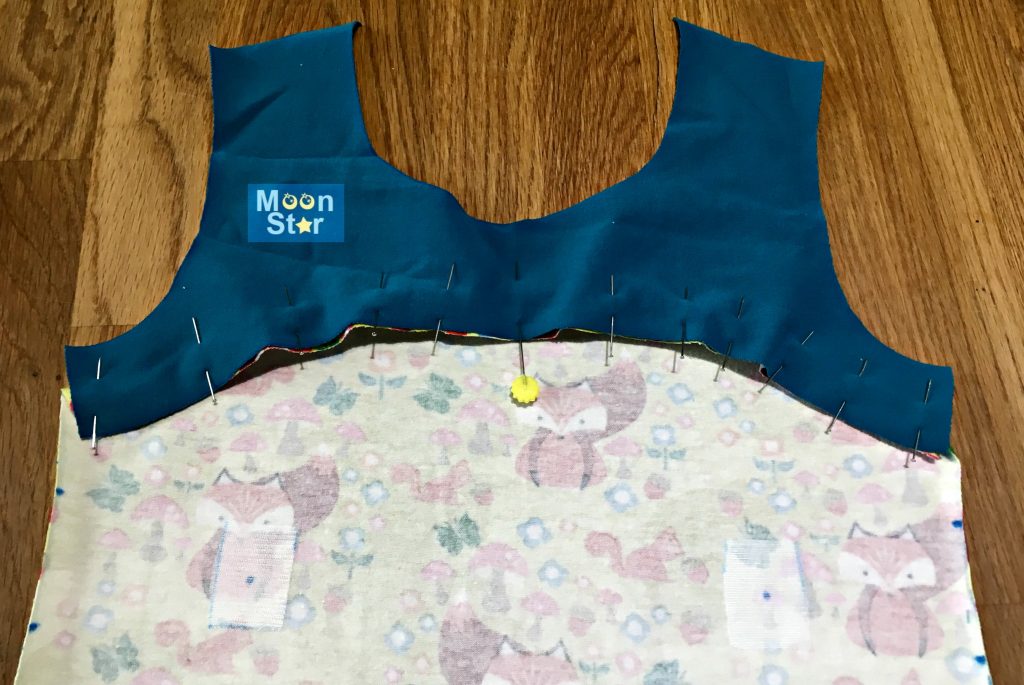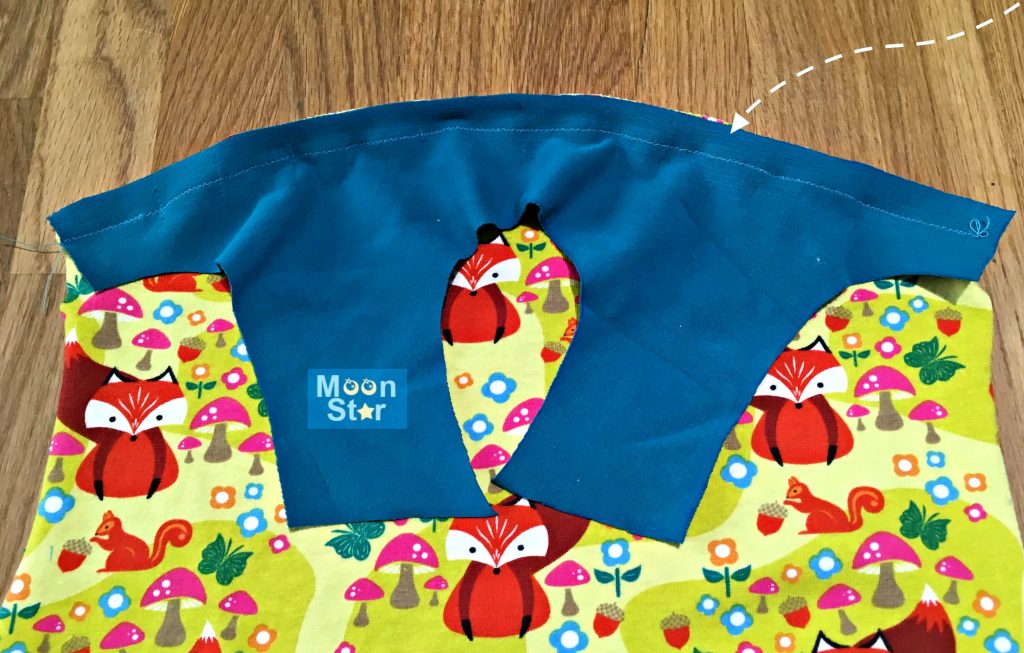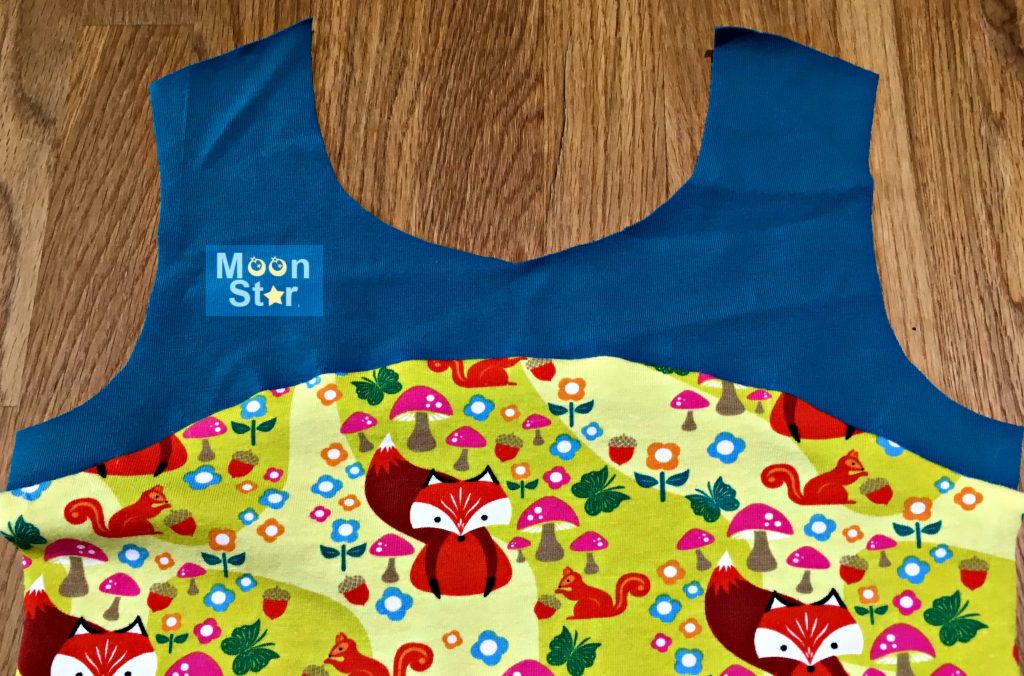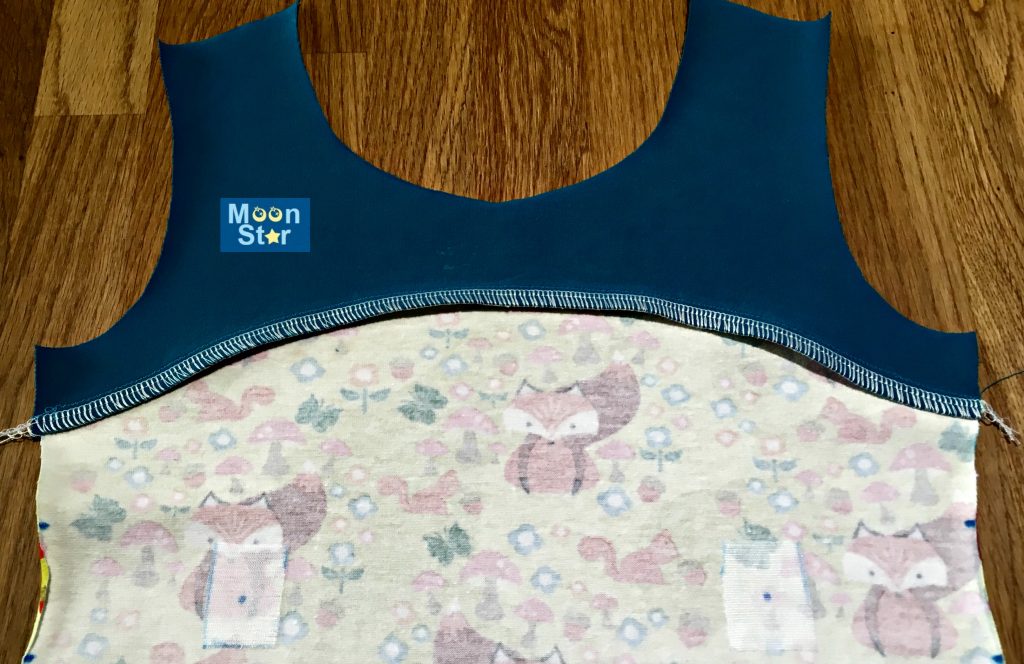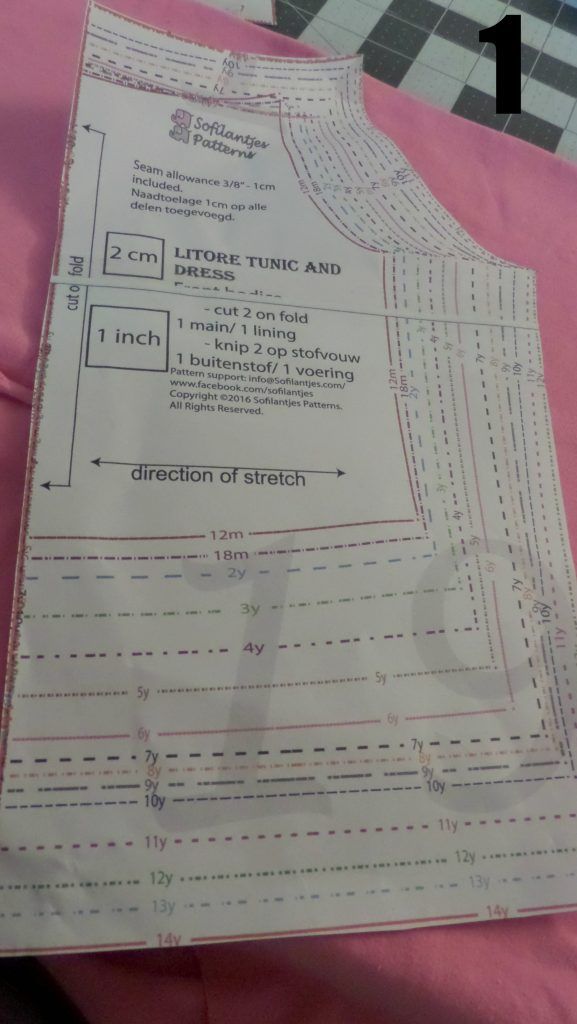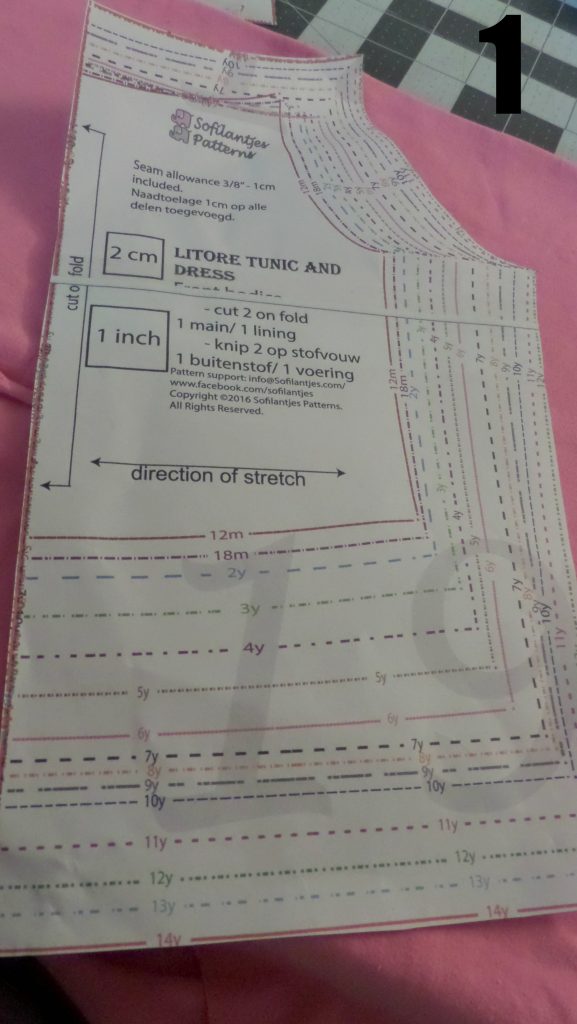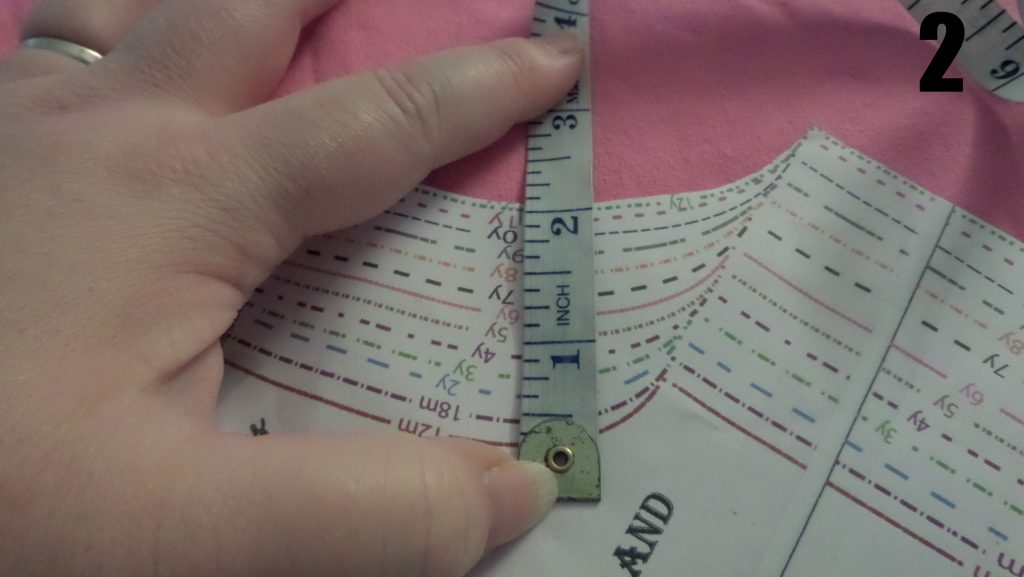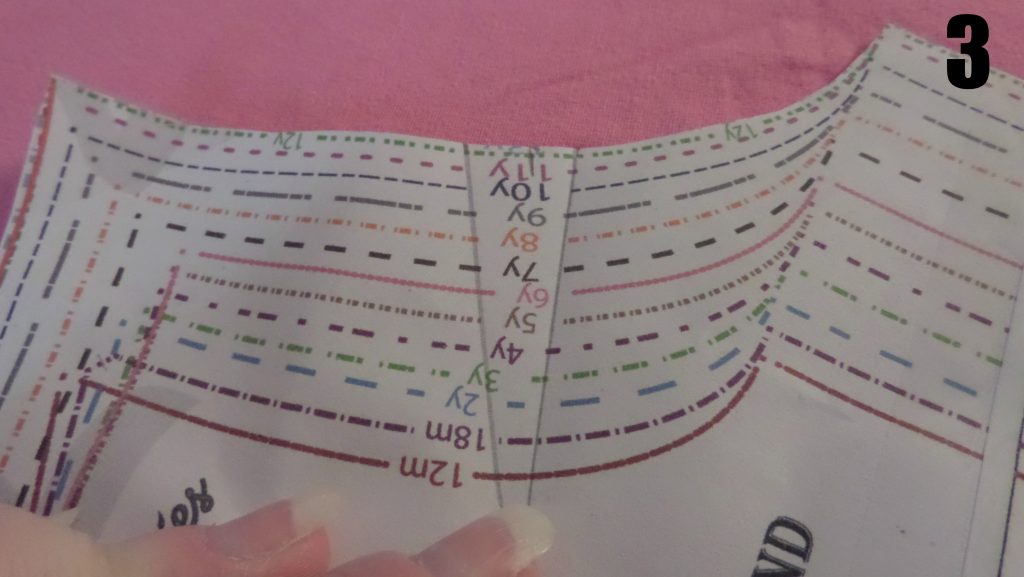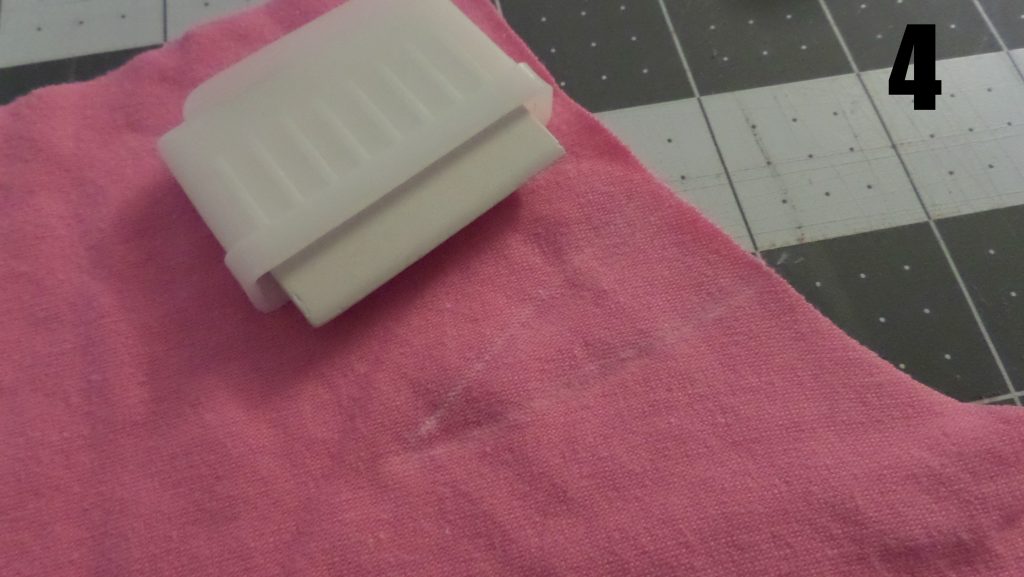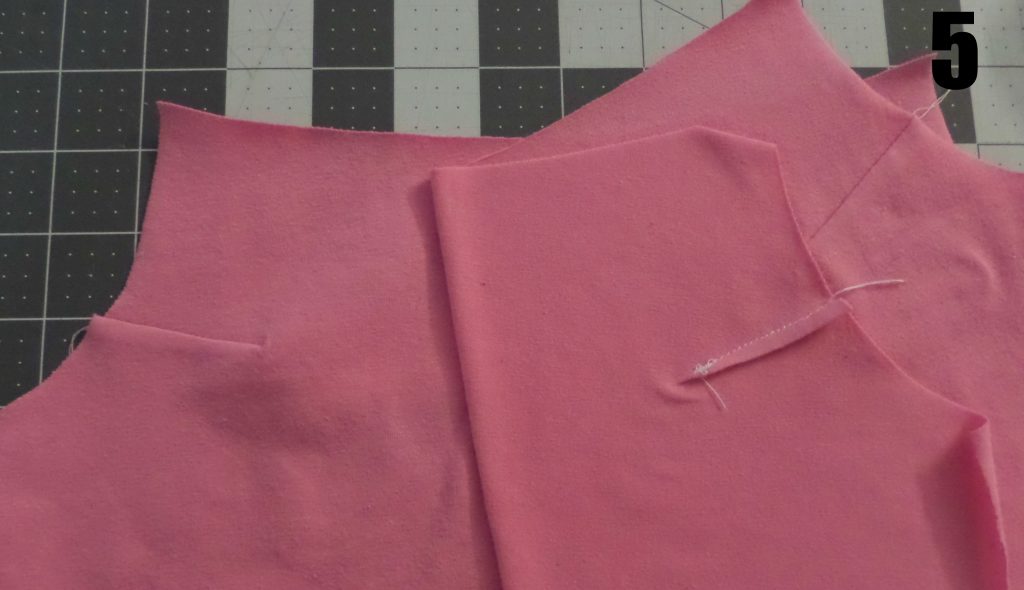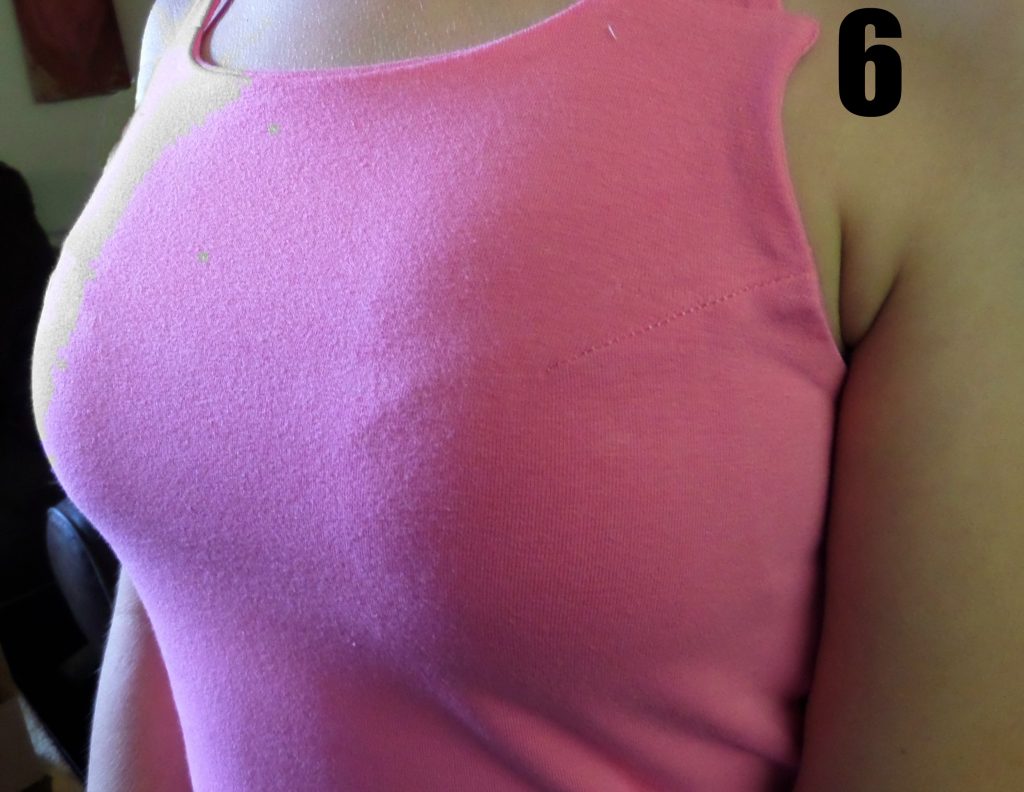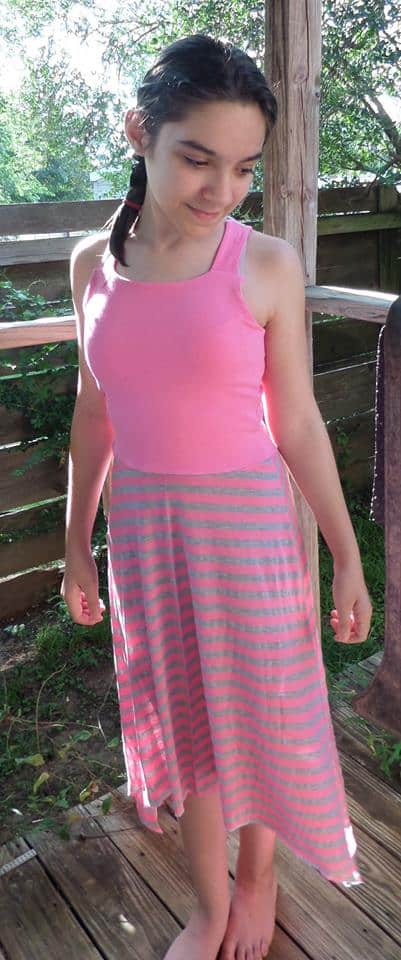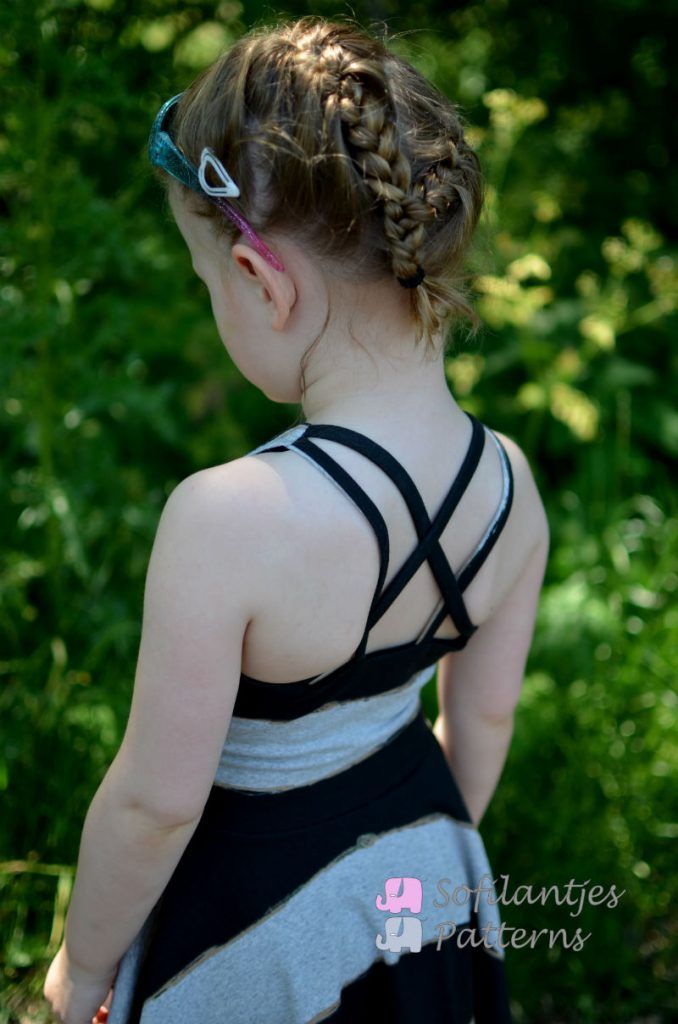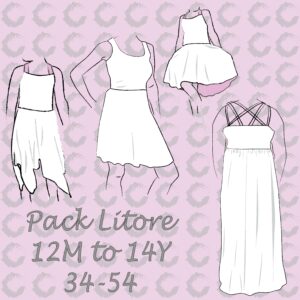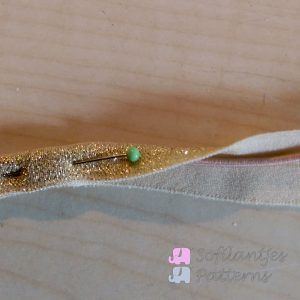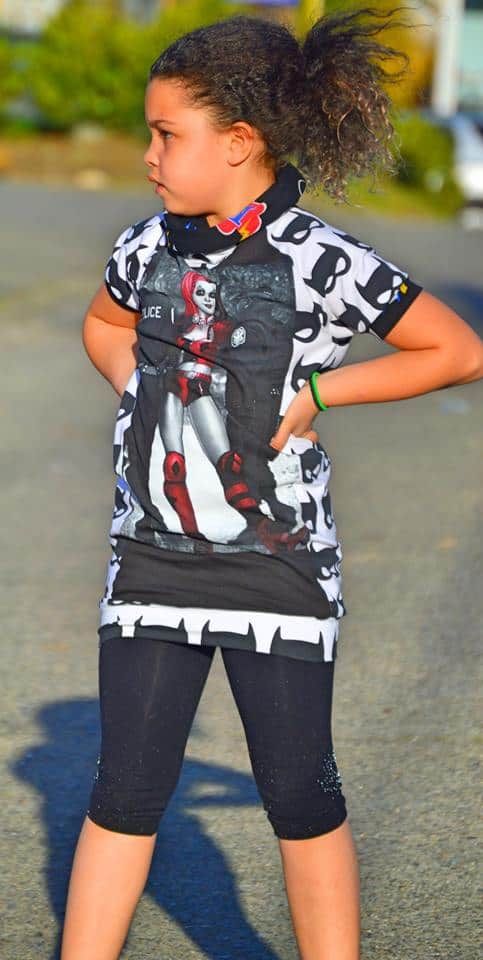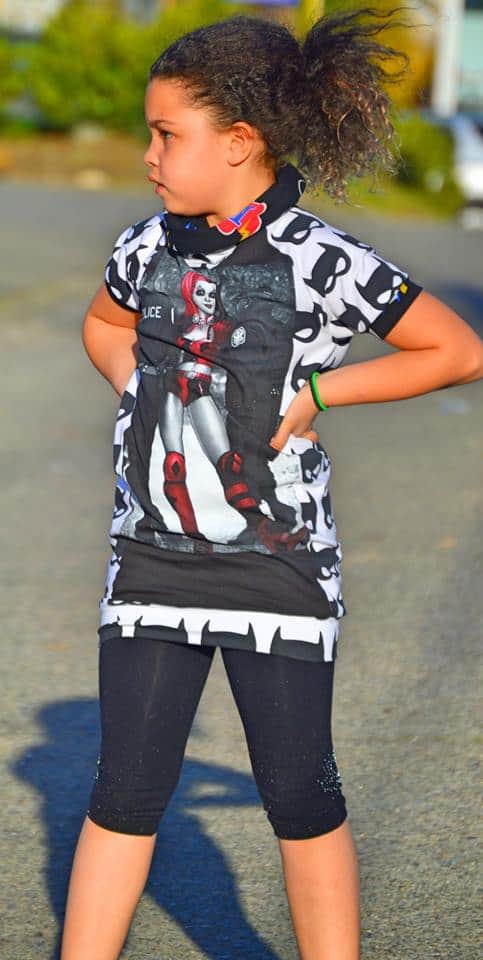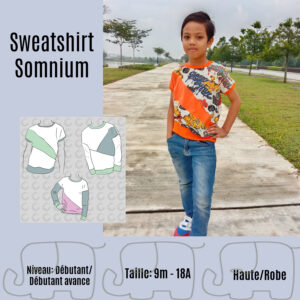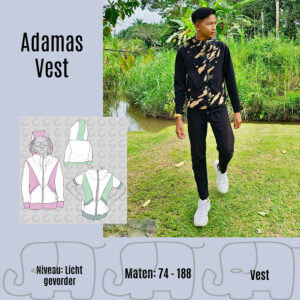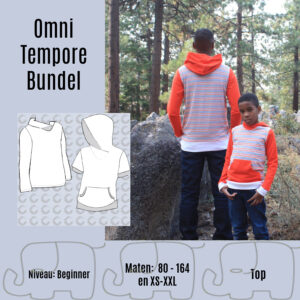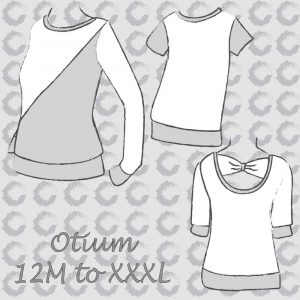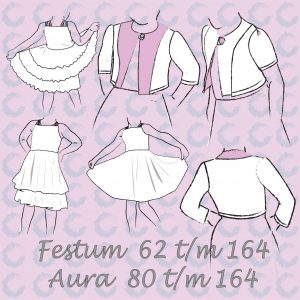Thanks Anne for having me again, I am so excited to share how I made a new dress for my daughter using the ADV Tee pattern!
Op verzoek van Sofilantjes Sew and Show leden werden de naaistappen van deze hack vertaald naar het Nederlands door Miranda van Inspinration, het zijn de cursief gedrukte stukjes.
The best part about sewing for my kids is that if I come across an adorable outfit, I don’t have to buy it, but I can MAKE it! While online shopping the other day, I came across this adorable dress that would be perfect for my 4 year old daughter. As I sat there and looked at the bodice part of this dress I thought, hey that sure looks like I can use the Sofilantjes ADV Tee to recreate this look.

To recreate the dress that I saw, I just needed the top portion of view B of the ADVTee. According to the pattern and my daughters chest size, she is a size 4. I drew a red line across from the bottom of the armscye about 2 inches down on both the front bodice piece and the back bodice piece.
Om de jurk van de Tea collection na te maken heb je het bovenstuk van het ADV Tee patroon nodig. Bepaal de benodigde maat op basis van de maattabel. Teken vervolgens een horizontale lijn op vijf centimter onder het armsgat. Teken deze lijn zowel op het voor- als achterpand. Knip het patroon doormidden op de zojuist getekende lijn, het onderste deel heb je niet nodig.
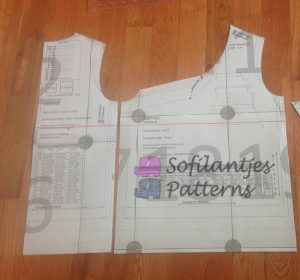
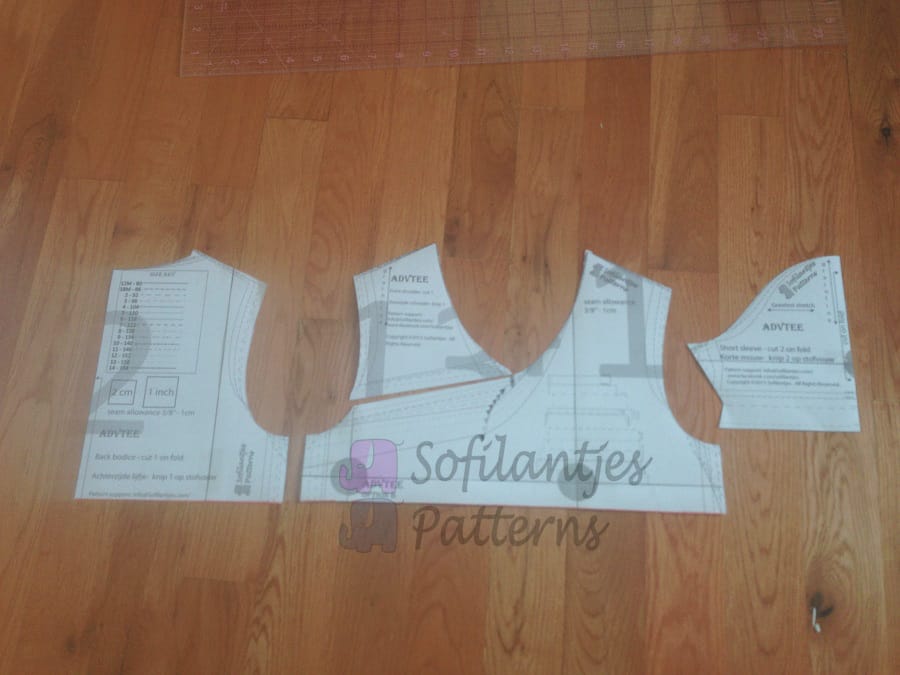
From this point I followed the directions for view B to add the ribbing to the neckline and to sew the side seams. The pattern originally calls for snaps/buttons to be placed on the crossover portion. I double checked that the bodice would fit over my daughters’ head if I sewed the crossover closed, and it was fine for my daughter, but I would recommend checking to make sure before sewing the two front bodice pieces to make one. Otherwise you can follow the pattern and add the snaps or buttons which is a cute feature. I was just trying to recreate the dress I had seen previously. Then, after sewing, I checked the fit again to just ‘be sure’ that everything was going to fit before I continued.
Naai vervolgens, zoals in de ADVT instructies, het stuk boordstof aan de hals en naai de zijnaden dicht. Ikzelf liet de Kamsnaps weg. Nadat ik controleerde of mijn dochters hoofd door de V-hals zou kunnen, naaide ik de hals vast (met een rekbare steek).
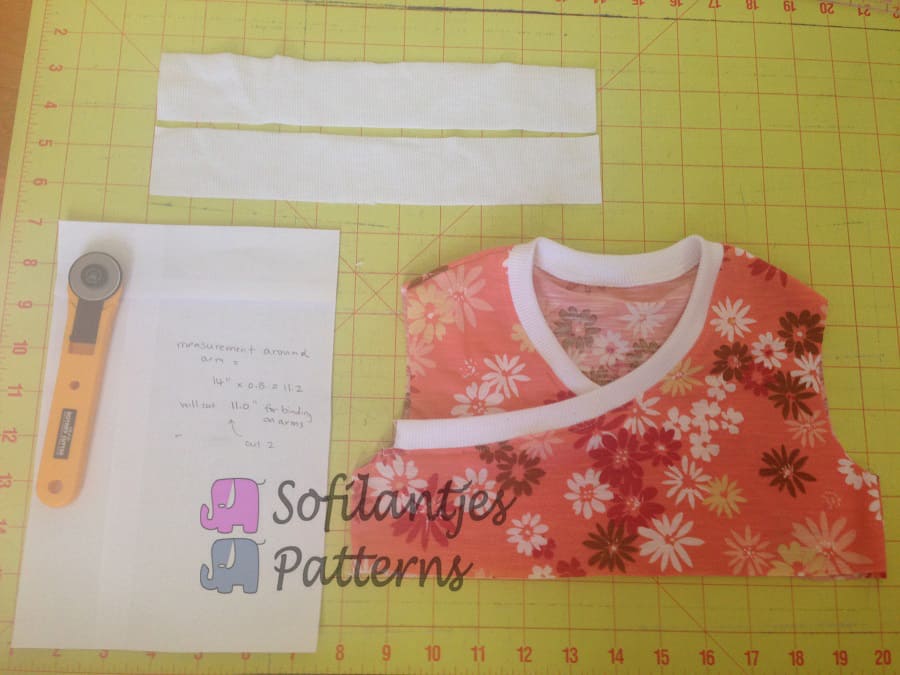
Now, the ADV Tee pattern has pattern pieces for sleeves, but I decided to just do ribbing to finish the arm area. In order to figure out how long to cut the ribbing, first I measured the circumference of the sleeve area after the sides were sewn. My measurement for the size 4 came to 14” and then you multiply by .8 which is 11.2” but I just rounded down to 11” and cut 2 pieces of my ribbing 11” x 2”. I sewed the short ends of each ribbing piece right sides together using a 1/4” seam then turned right side out and folded the pieces in half and pinned to the right side of the shirt making sure that I evenly pulled the ribbing to match the armscye. Now the bodice is completely done, and we can start on the skirt.
Ik werkte de armsgaten af met boordstof, net als in de voorbeeldjurk die ik zag. Om de juiste lengte te bepalen, meet je het armgat op. Die lengte doe je maal 0.8 cm en dat geeft de benodigde lengte boordstof. Knip vervolgens een reep boordstof van 5 cm breed bij de lengte die je zojuist bepaalde. Deze strip naai je vervolgens aan het armgat zoals een gebruikelijk boord. Daarvoor sluit je eerst de korte zijde, vervolgens dubbel vouwen en daarna op de goede kant van de stof naaien. Hier is eventueel nog een andere Sofilantjes blogpost (in het Engels) met plaatjes hoe je een boordje vastnaait.
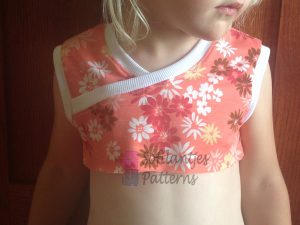
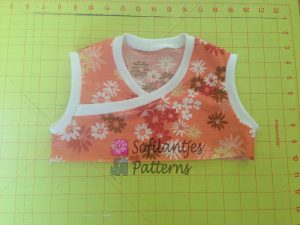
I figured the length of my skirt piece to be 19” because I wanted it to fall just below my daughters’ knee so that she had room to grow with the dress. And to make things easy, I just used the full width of my fabric which is 54” and cut one piece for the skirt portion. Do take into consideration the seam allowance you will need to sew the skirt to the bodice and any hem you will have when determining the length of the skirt you will cut. So now that I had my piece of skirt fabric measuring 54”x 19” cut out, all I need to do is sew the 19” sides right sides together to make a big tube. Figure out which side is the top of your skirt and sew 2 rows of basting stitches, one at ¼ “ from the top and then 3/8” down from the first row. Gather the fabric until it is the same measurement as your bodice piece. Place your bodice piece inside your skirt, right sides together, and sew your bodice to the skirt between your two rows of basting stitches. Doing this will make nice and even gathers. You can finish with your serger and then hem however you wish, but since this is knit, I typically leave it unhemmed since it won’t fray.
Bepaal vervolgens de lengte van het rokdeel. Gebruik daarvoor een meetlint en meet vanaf 7 cm. onder de oksel naar waar je de zoom van de rok wilt (ergens rond de knie). Voeg vervolgens naadwaarde toe (1 centimeter aan de bovenkant en twee centimeter voor de zoom). Ikzelf gebruikte de hele stofbreedte, 160 centimeter en knipte een rok aan 1 stuk (rechthoek). Sluit de zijnaad (of zijnaden als je de rok in twee delen knipt). Naai twee rijgdraden in de bovenkant van de rok, eentje op 4 mm en eentje op 10 mm. Rimpel vervolgens, door aan de draden te trekken, zodat de rok dezelfde breedte heeft als het bovenstukje. Plaats het bovenstukje in de rok, met de goede kanten op elkaar. Naai de rok aan het lijfje met een stiklijn tussen de rijgdraden. Werk eventueel de onderzoom af, dit is echter geen vereiste omdat tricot niet rafelt. Als je geen zoom maakt, hoef je dus ook geen zoom-naad-waarde toe te voegen in de eerdere stap.
Hope you enjoy this easy hack of the ADV Tee. I know my daughter will be spending many days this summer in this comfortable knit dress, thanks Sofilantjes for great patterns that can be used in so many ways!

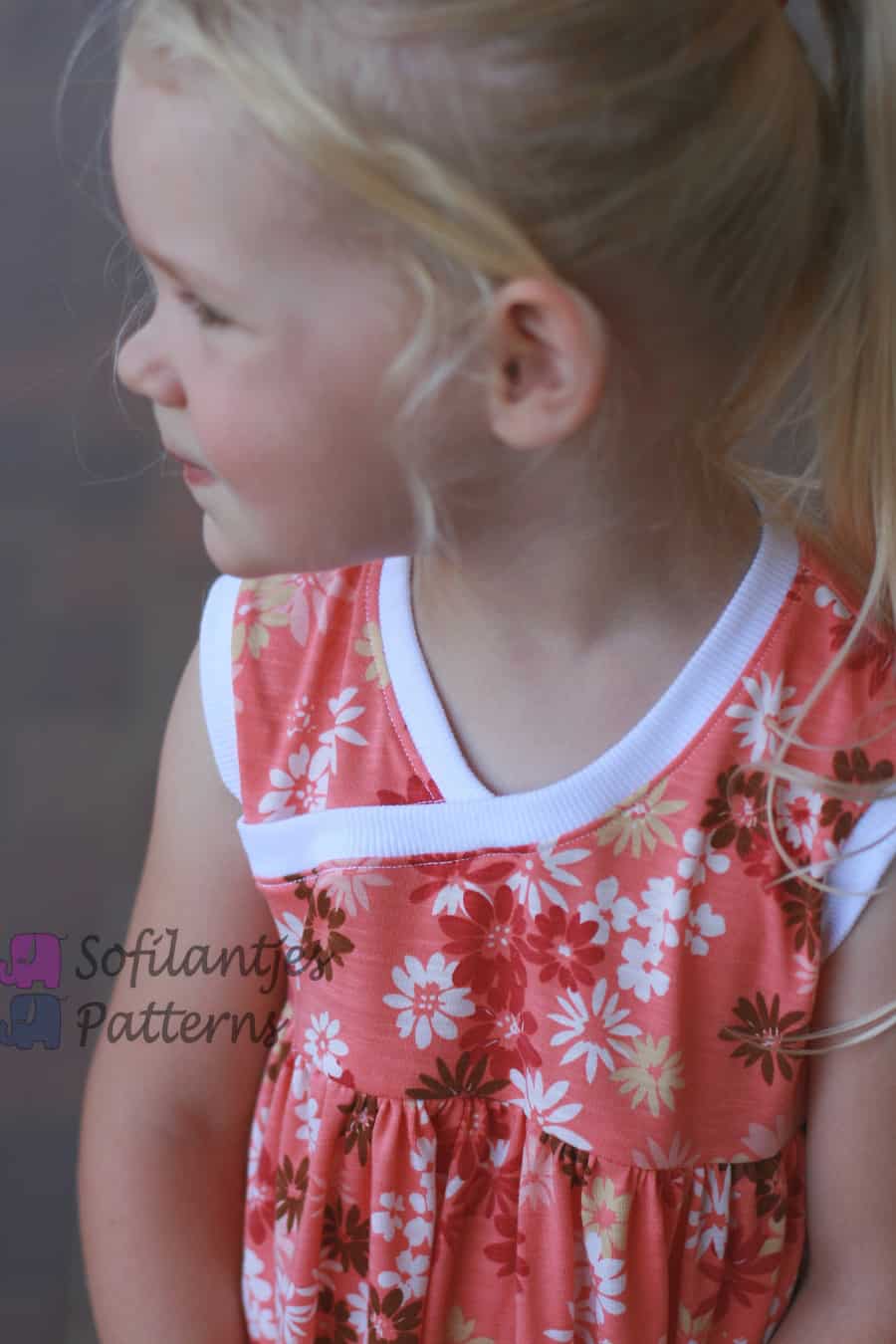
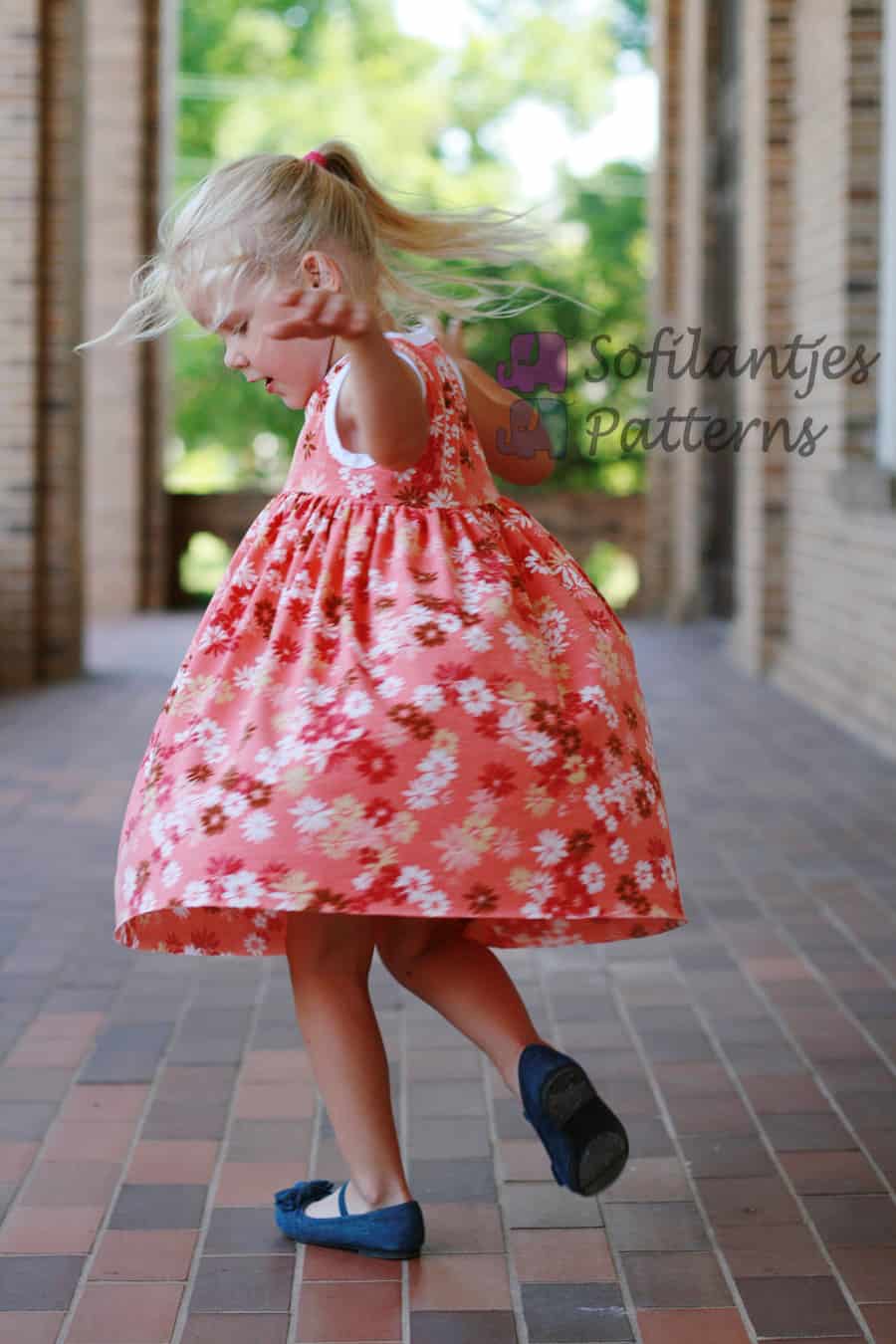



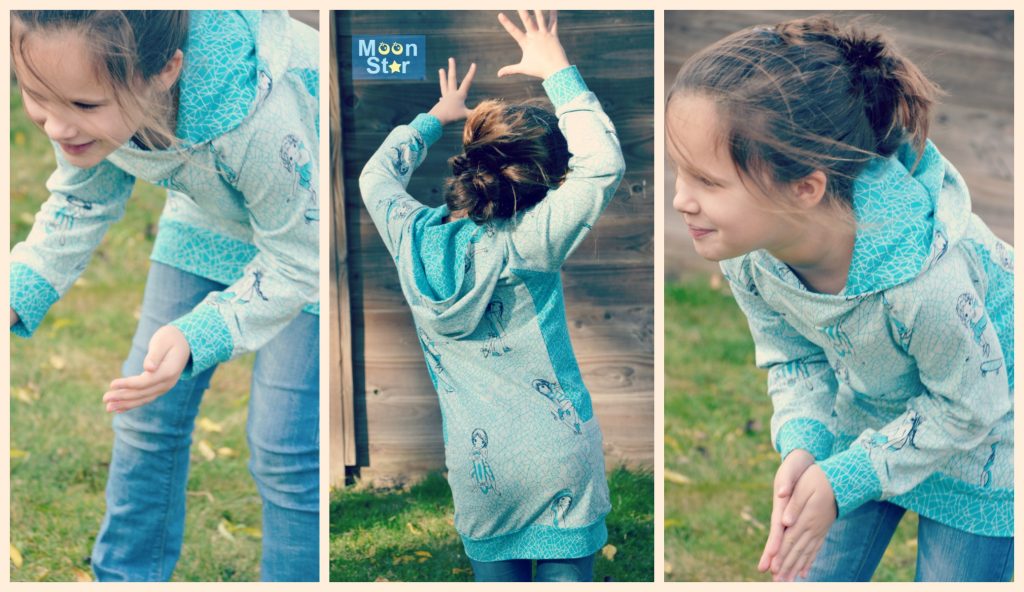
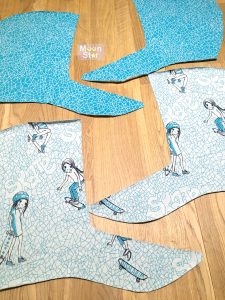
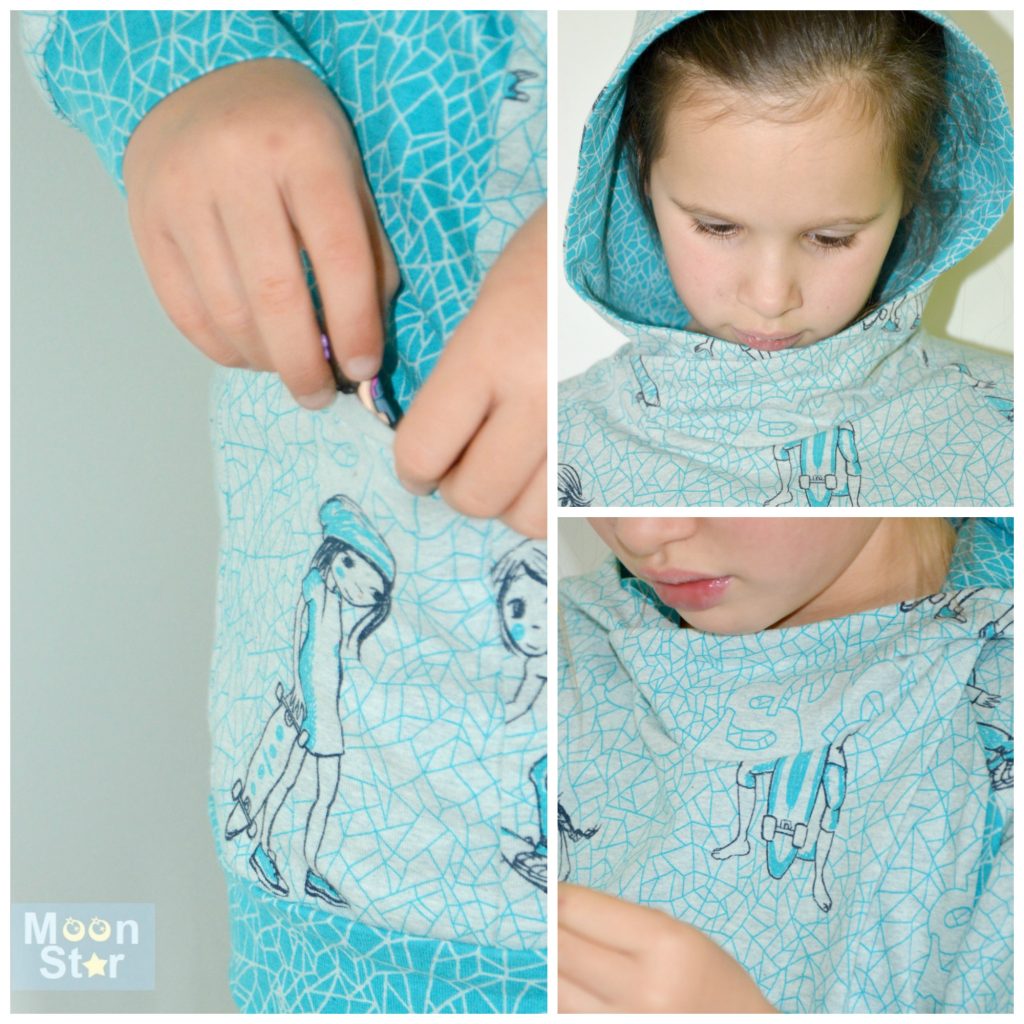

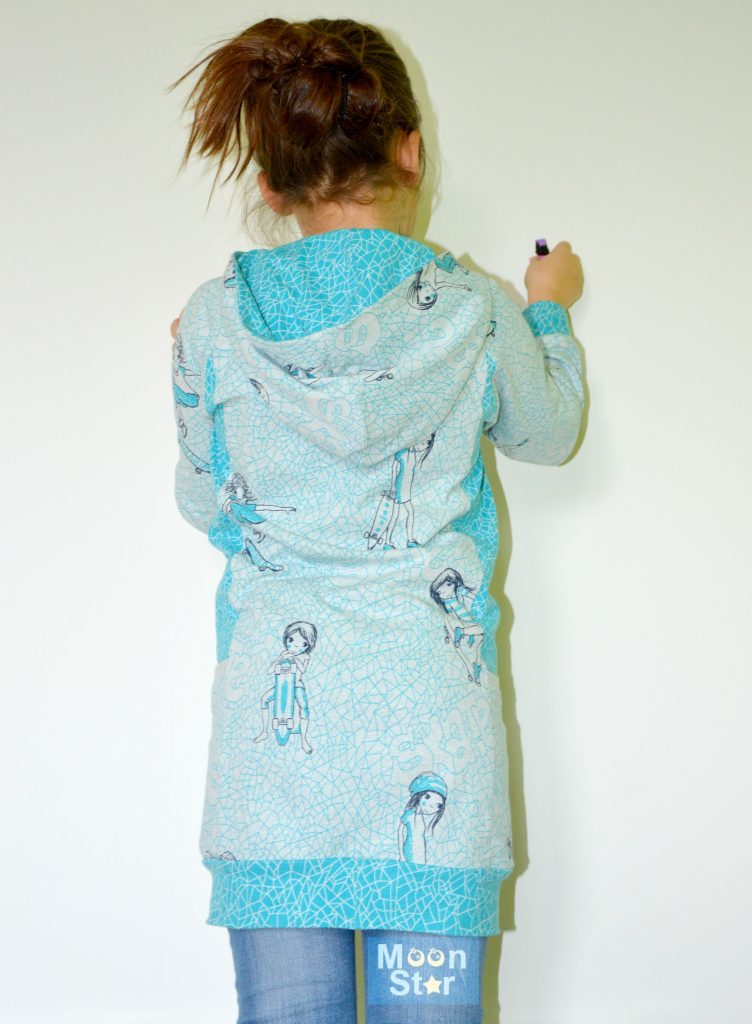


 Semper Sweater – Nederlands$8.68 excl. tax
Semper Sweater – Nederlands$8.68 excl. tax Semper Sweater – English$8.68 excl. tax
Semper Sweater – English$8.68 excl. tax

